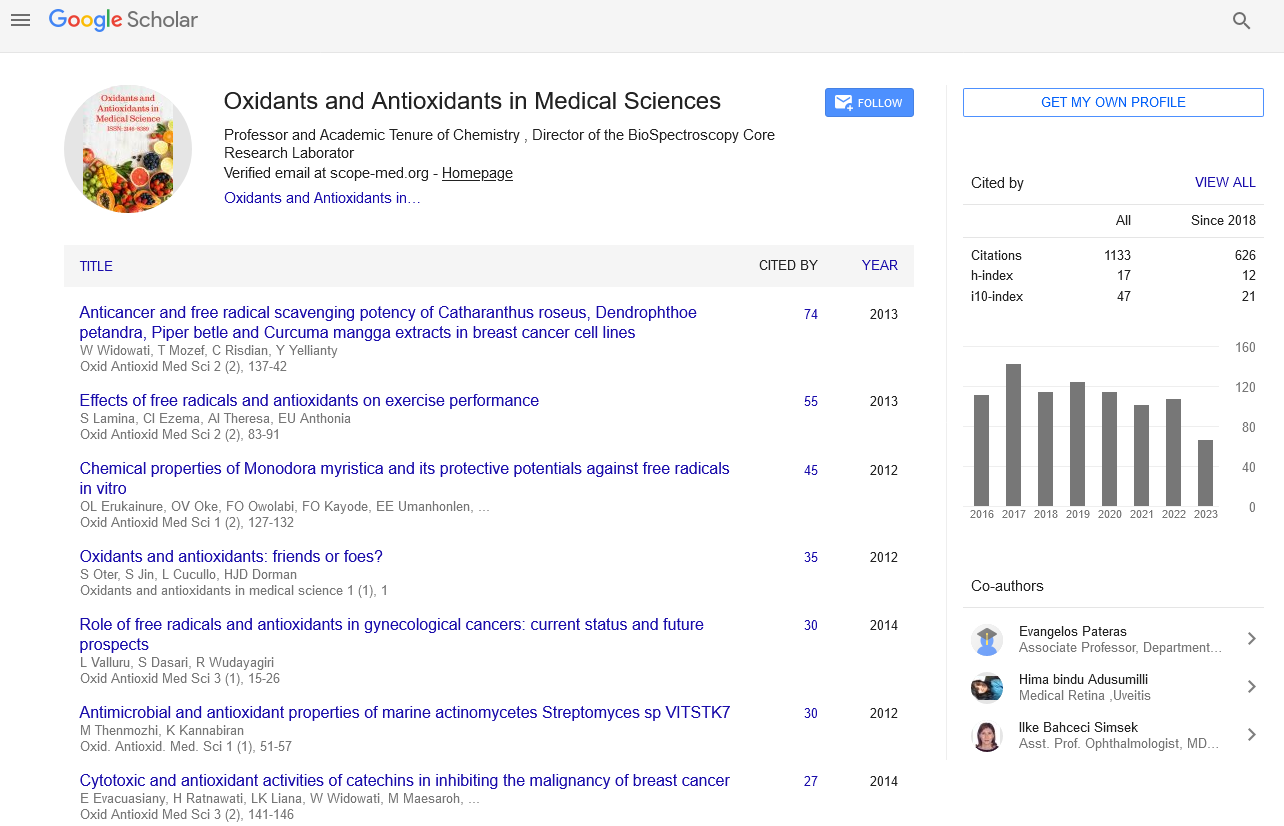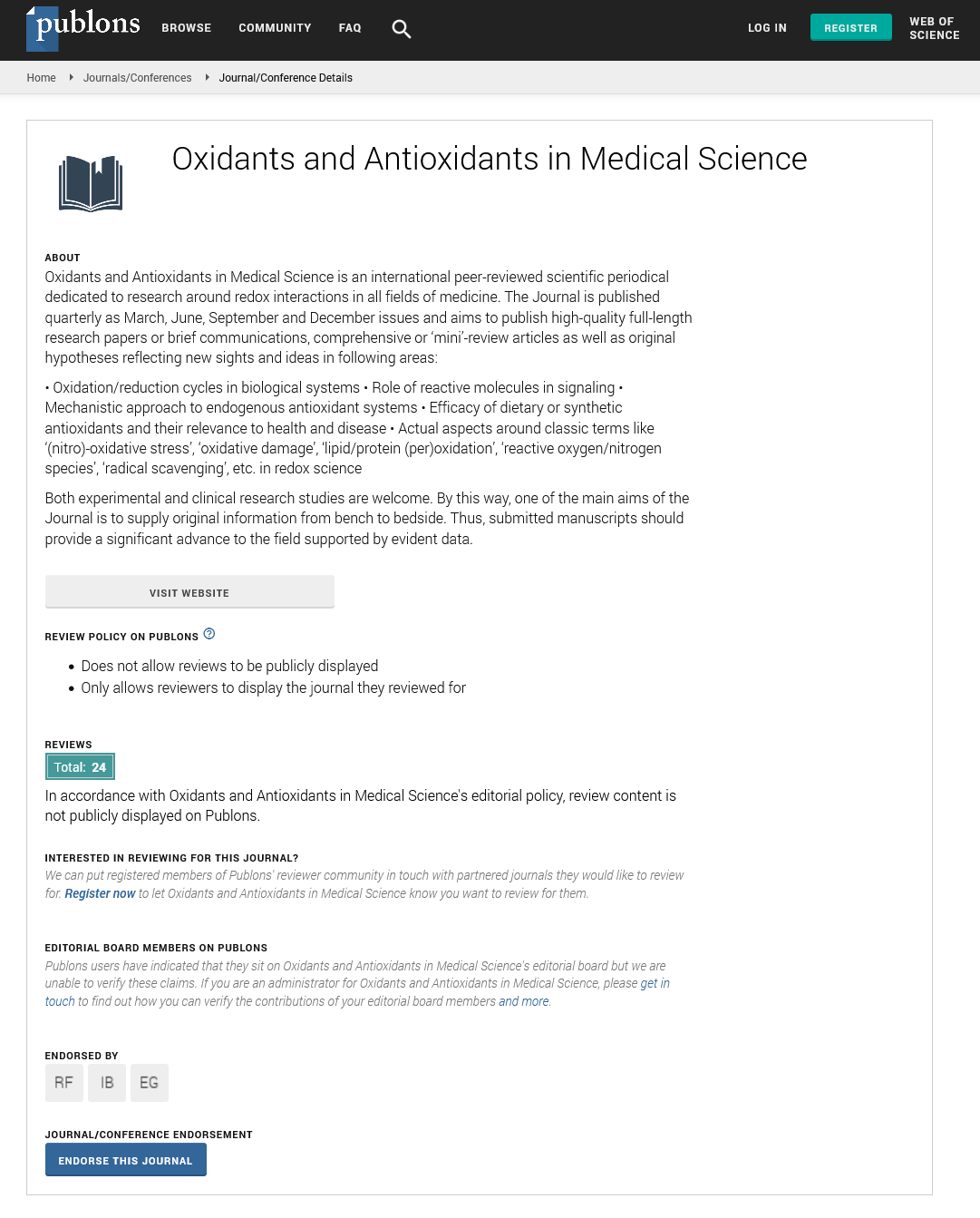Perspective - Oxidants and Antioxidants in Medical Science (2023)
Influencing of Maillard Reaction Series and its Stages
Eric Decker*Eric Decker, Department of Food Science, University of Massachusetts, Amherst, MA, USA, Email: Ericde578@gmail.com
Received: 03-May-2023, Manuscript No. EJMOAMS-23-101645; Editor assigned: 08-May-2023, Pre QC No. EJMOAMS-23-101645 (PQ); Reviewed: 22-May-2023, QC No. EJMOAMS-23-101645; Revised: 29-May-2023, Manuscript No. EJMOAMS-23-101645 (R); Published: 05-Jun-2023
About the Study
The Maillard reaction is a complex series of chemical reactions that occur when heat is applied to food. It is responsible for the browning and development of flavors in a variety of cooked foods, such as bread, meat, and coffee. The reaction was named after French chemist Louis-Camille Maillard, who first described it in the early 20th century.
Stages
The Maillard reaction involves the interaction between amino acids (the building blocks of proteins) and reducing sugars, such as glucose or fructose. It occurs in three main stages: the initial reaction, the intermediate stage, and the final stage [1].
In the initial reaction stage, the amino acids and reducing sugars undergo a condensation reaction, forming a Schiff base. This reaction is facilitated by the application of heat and occurs more readily in alkaline conditions. The Schiff base is unstable and undergoes further rearrangement to form Amadori products [2].
During the intermediate stage, a series of complex chemical reactions take place. The Amadori products undergo dehydration and fragmentation, leading to the formation of a wide range of compounds. These compounds include furans, pyrazines, and other volatile molecules that contribute to the characteristic aromas and flavors associated with the Maillard reaction [3].
In the final stage, the reaction products continue to undergo a variety of reactions, leading to the formation of melanoidins. Melanoidins are brown, high molecular weight compounds that are responsible for the characteristic brown color of foods cooked using the Maillard reaction. These compounds are also responsible for the rich flavors associated with roasted or baked foods [4].
Factors Influencing
The Maillard reaction is influenced by a variety of factors, including temperature, pH, moisture content, and the presence of other compounds. Higher temperatures generally result in faster reaction rates, although excessively high temperatures can lead to burnt flavors. The pH of the reaction environment also plays a significant role, with alkaline conditions generally favoring the Maillard reaction. Moisture content affects the reaction by influencing the availability of reactants and the momobility of molecules [5,6].
Applications
The Maillard reaction is not limited to food preparation; it also occurs in other fields, such as the production of pharmaceuticals, cosmetics, and even art restoration. In the pharmaceutical industry, the Maillard reaction can impact the stability and efficacy of drugs. In cosmetics, it can affect the color and scent of products. In art restoration, the reaction is of interest when dealing with the aging and discoloration of paintings and other works of art [7].
While the Maillard reaction is generally desirable for the development of flavors and aromas in cooked foods, it can also have some negative effects. For example, it can contribute to the formation of certain harmful compounds, such as acrylamide, which is formed when starchy foods are cooked at high temperatures. Acrylamide has been classified as a potential human carcinogen, and efforts are being made to minimize its formation during cooking processes [8,9].
The Maillard reaction is a fascinating and complex series of chemical reactions that occur when heat is applied to food. It is responsible for the browning and development of flavors in a wide range of cooked foods.
Understanding the Maillard reaction can help chefs and food scientists create delicious and visually appealing dishes while also being aware of potential health risks associated with certain reaction products [10].
References
- Fu Y, Zhang Y, Soladoye OP, Aluko RE. Maillard reaction products derived from food protein-derived peptides: Insights into flavor and bioactivity. Crit Rev Food Sci Nutr 2020; 60(20):3429-3442.
[Crossref] [Google Scholar] [PubMed]
- Nooshkam M, Varidi M, Verma DK. Functional and biological properties of Maillard conjugates and their potential application in medical and food: A review. Food Res Int 2020; 131:109003.
[Crossref] [Google Scholar] [PubMed]
- Xu ZZ, Huang GQ, Xu TC, Liu LN, Xiao JX. Comparative study on the Maillard reaction of chitosan oligosaccharide and glucose with soybean protein isolate. Int J Biol Macromol 2019; 131:601-607.
[Crossref] [Google Scholar] [PubMed]
- Chiang JH, Eyres GT, Silcock PJ, Hardacre AK, Parker ME. Changes in the physicochemical properties and flavour compounds of beef bone hydrolysates after Maillard reaction. Food Res Int 2019; 123: 642-649.
[Crossref] [Google Scholar] [PubMed]
- Song Y, Du B, Ding Z, Yu Y, Wang Y. Baked red pepper (Capsicum annuum L) powder flavor analysis and evaluation under different exogenous Maillard reaction treatment. LWT 2021; 139:110525.
- Habinshuti I, Chen X, Yu J, Mukeshimana O, Duhoranimana E, Karangwa E, et al. Antimicrobial, antioxidant and sensory properties of Maillard reaction products (MRPs) derived from sunflower, soybean and corn meal hydrolysates. LWT 2019;101:694-702.
- Navicha W, Hua Y, Masamba KG, Kong X, Zhang C. Effect of soybean roasting on soymilk sensory properties. British Food Journal 2018.
- Chen F, Lin L, Zhao M, Zhu Q. Modification of Cucumaria frondosa hydrolysate through maillard reaction for sea cucumber peptide based-beverage. LWT 2021;136:110329.
- Wang W, Zhang L, Wang Z, Wang X, Liu Y. Physicochemical and sensory variables of Maillard reaction products obtained from Takifugu obscurus muscle hydrolysates. Food Chem 2019;290 :40-46.
[Crossref] [Google Scholar] [PubMed]
- Zhou X, Cui H, Zhang Q, Hayat K, Yu J, Hussain S, et al. Taste improvement of Maillard reaction intermediates derived from enzymatic hydrolysates of pea protein. Food Res Int 2021;140:109985.
[Crossref] [Google Scholar] [PubMed]
Copyright: © 2023 The Authors. This is an open access article under the terms of the Creative Commons Attribution Non Commercial Share Alike 4.0 (https://creativecommons.org/licenses/by-nc-sa/4.0/) This is an open access article distributed under the terms of the Creative Commons Attribution License, which permits unrestricted use, distribution, and reproduction in any medium, provided the original work is properly cited.







